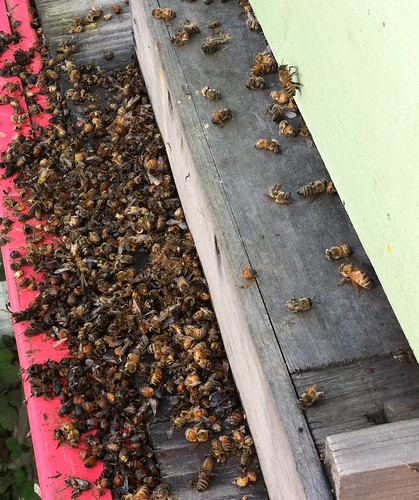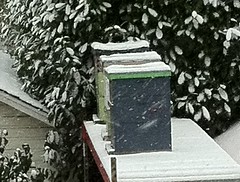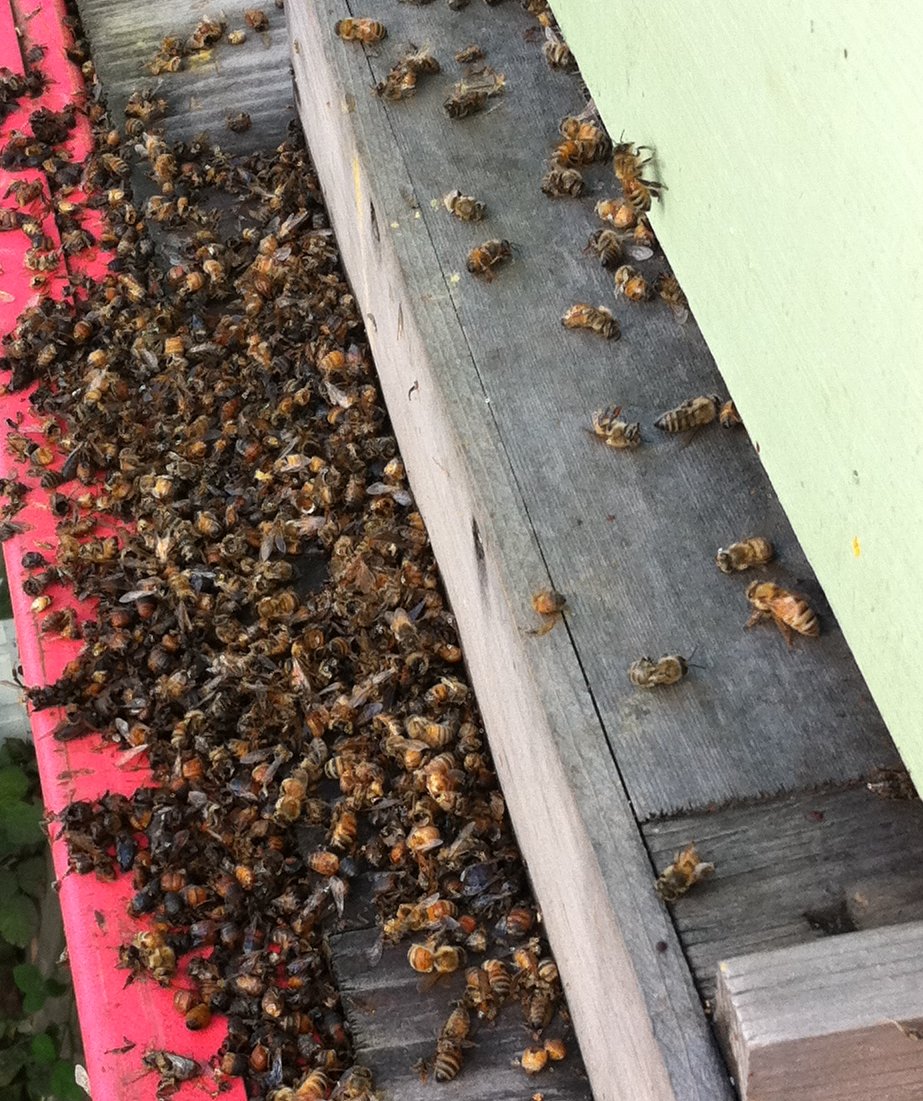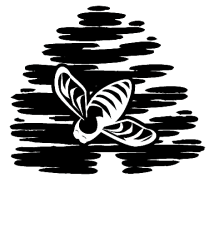 Ugh, I was in the middle of a phone call, looking out at my window to admire my hives this past week, and what do I see? A pile of bee carcasses outside the front stoop of my middle hive. That’s a picture of it on the right.
Ugh, I was in the middle of a phone call, looking out at my window to admire my hives this past week, and what do I see? A pile of bee carcasses outside the front stoop of my middle hive. That’s a picture of it on the right.
The odd thing (or perhaps, Dr. Watson, a clue!) is that of my three hives, that one was far and away the most active in the weeks leading up to the die-off. Enough so that when I had a class of second graders over a few weeks back to see my hives, one of the questions they asked as “why does that hive have so many bees and the other ones don’t?”
So, Internet, what’s your thought? Whodunnit? Here are my best guesses, but I’m just an amateur beekeeper, I have always depended on the kindness of strangers to guide to me.
 Cold: We had an early snow here in Seattle (see right), and maybe it took them unawares. The problem with this theory is that a) it didn’t effect the other two hives and b) it wasn’t that cold. Sure, it snowed, and we had ice on the roads for three or four days, but that was it. I’m sure Montana beekeepers would laugh if I tried to call this a “cold snap”.
Cold: We had an early snow here in Seattle (see right), and maybe it took them unawares. The problem with this theory is that a) it didn’t effect the other two hives and b) it wasn’t that cold. Sure, it snowed, and we had ice on the roads for three or four days, but that was it. I’m sure Montana beekeepers would laugh if I tried to call this a “cold snap”.- Pesticide: I visited some bee hives they have at a nearby arboretum some years ago and saw a pile of dead bees out front. When I asked, I was told that likely some bees had gotten into some pesticide somewhere and brought it home. The problem with this theory is who the hell puts out pesticide at the end of November after a snowstorm?
- Hornets: I’ve seen that National Geographic video of the hornets wiping out a hive of bees while the Flight of the Valkyrie plays in the background. It’s astounding. And, suspiciously, a close inspection of the bee carcasses showed most in parts, and hollow shells. However, the problem with this theory is that there are no marauding hornets in Seattle in November. Plus, I’ve been around the house recently, and I would have heard Wagner playing.
I cracked all three hives to see what they looked like, and the affected hive was definitely decimated, with the remaining bees clustered in the center. The bottom brood box was mostly empty, just some bits of capped honey around the edges of the frames, a few frames of pollen and a scattering of partially hatched bees. The top brood chamber had a good strong store of honey, though, as would be expected given only November. There was a partially filled Western on top of that, also half full of honey.
I removed the empty brood chamber from the bottom and left the frames out for the bees to scavenge from.
Any advice, Internets?



